In my experience, there's a significantly widespread misconception amongst uninitiated anglers that catching bonefish is extraordinarily difficult. You'd likely be hard pressed to find many anglers that have spent time casting to bonefish that would agree, yet the misconception seems to persist. I've even seen this message perpetuated by bonefish guides and outfitters which, for a business that relies on attracting anglers to their brand of fly fishing, seems like an awful strategy. The result is that novice, intermediate and even some experienced anglers place hunting bonefish on their "can't do" list thanks to its perceived difficulty. Well, I'm here to set the record straight. As it turns out, bonefishing? Yeah, not that hard.
Bonefish are known to virtually all fly anglers as one of the most sought after species across the globe thanks to the ubiquitous dissemination of tales of bright silver bonefish tearing off line, disappearing backing at alarming rates, burning up reels and so on. Add in the fact that all this is happening on a sun bleached, sandy flat somewhere in the tropics and it isn't hard to paint a terribly appealing picture. Unfortunately, these wholly accurate tales about hooking up bonefish also typically include 80 foot casts, often in gale force winds, that need to land on a dinner-plate sized target. That's the part of the story where many a trout fisherman, even some pretty damned good ones, thinks "I can't do that" and checks out. No bonefish in their future.
But guess what? These are fishing tales. Am I saying that it is untrue that catching some bonefish requires you to be able to drop a 70 or 80 foot cast on a dinner plate? No. I'm saying that catching many a bonefish doesn't. I've caught bonefish at 60 feet (okay, maybe 40) while fighting a nasty crosswind but I've also caught bonefish with a roll cast at 15 feet. I've put a long cast spot on the target and failed to get an eat almost as often as I've blown the cast 10 feet behind and/or short of the fish I was aiming for, only to have that fish completely reverse direction and backtrack to go pick up my fly.
As noted, the advice from many a bonefish outfitter conspires to make the picture seem even more bleak for the trout angler that has yet to walk a bonefish flat. Anglers are encouraged to practice casting before coming. Perfect the double haul. Learn to cast better in the wind. Develop pinpoint accuracy. In general, "go big or go stay home." The advice here is all good -- as doing all of these things will serve to improve your chances for success and bolster your trip -- it is just poorly delivered. Bad marketing.

The reality is that catching bonefish on the fly isn't that hard. Yes, the more advanced your skills are, the more success you're likely to have. That much is simple common sense. The important point to note is that anglers at almost any skill level can catch bonefish. Even novice anglers. Bonefish generally aren't picky about pattern or presentation and there's lots of them out there. The hardest part of catching a bonefish is putting yourself there, committing to do it.
Is all this to suggest that I'm recommending you dump $4,000 into a bonefishing trip if you just picked up a fly rod a few months ago? Probably not. But, if you're reasonably comfortable with your casting and are having success on the stream, you're likely up to the task. And, if you're one of those guys that has been stomping along the streambank in waders for ages but still thinks they're not angler enough to chase bonefish? Wake up. Get to it.

If you've been contemplating taking the plunge, here are a few suggestions for upping your chances for success as a first timer.
Take the Road Less Traveled
As I mentioned, there are lots of bonefish. There's also lots of places to go chase them. And while bonefish aren't picky eaters, they're just as susceptible to pressure as any other fish and thus are generally more difficult to catch when they see a lot of anglers. Whether it is seeking out the quiet spots in the Bahamas or heading to other lesser known destinations, traveling to chase bonefish that don't see many flies can dramatically change the picture. On a recent trip to Anegada in the British Virgin Islands, we chased bonefish on many a flat, seeing school after school of bonefish without ever seeing a single other angler. The bonefish didn't either. Can you still expect to catch bonefish in the Keys at that popular lodge you've been dreaming about? Sure. But if you're looking to increase your comfort level, seeking out dumber (read: less pressured) bonefish can help.
Practice Your Casting
Yes, I just got done telling you that you don't need to be an expert caster. I meant it. But, if you're more comfortable with your casting, you'll be more comfortable investing in a bonefishing trip. Head out on a few windy days and practice techniques for casting in the wind until you have a reasonable handle on them. Improve, or discover, the double haul. Work on shooting line and reducing your false casting. Must you do this in order to go? No. But you'll feel better about it if you do.
Go with a Guide
You might be tempted to try a DIY bonefish outing in an effort to reduce the financial investment for your first bonefish trip. After all, if you're not ready, why not hedge the potential damage? Bad idea. Yes, a guide will know the best spots to find fish and get you to those fish, but the most important thing a guide will help you do is see them.
One of the hardest things for an angler that's new to the flats is spotting fish. And the idea that "you can't catch what you can't see" is perhaps nowhere more true than on the flats. Be prepared to not see fish. Not at all. For a while. Your guide will see them, and he'll point them out to you. He'll tell you how far away they are and in what direction. For a while you'll keep telling him you can't see them. Still can't see them. Then for a while you'll lie and say you can, even though you can't. Eventually, your fish eye will come, but it takes time, and having someone who is experienced at spotting fish helping you through the process will speed it up significantly.
That DIY trip? Save it for down the road.





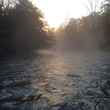


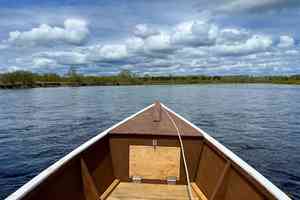


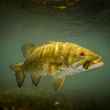
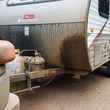
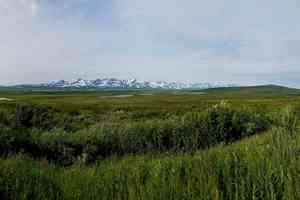

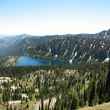
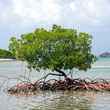
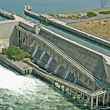



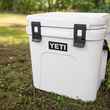
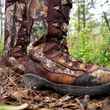



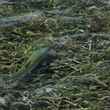
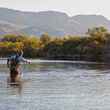
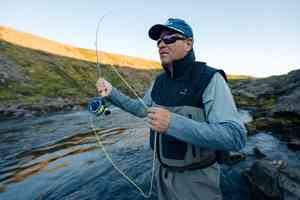

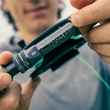
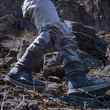
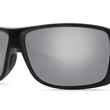
Comments
Aaron Cooper replied on Permalink
No way man, it's a perfect strategy for guides. If it sounded like it was easy, nobody would hire a guide! They have to make themselves necessary or there is no business!
Corey Fowler replied on Permalink
Maybe in some areas, but I'd venture to say not in most. Bonefishing isn't like walking onto a stream -- there's almost always a boat involved. Even if you're not fishing from a boat, you still need to get to the flats you're going to fish. So, in many ways, the guide comes with the boat. That's what the angler needs most.
The guide has much, much more to offer ... but I think the need for boats makes bonefish guides somewhat indispensable as a rule.
Yes, there are DIY spots and DIY operations, but those are the exception, not the rule.
ginkthefly replied on Permalink
Yeah, have to agree. Catching bonefish didn't turn out to be the impossible task I expected it to be. That doesn't mean I caught 100, but I caught some each day I was out, which is MUCH MORE than I expected.
I've certainly fished to picky trout that were harder to catch.
J.A.L. replied on Permalink
The difficulty is related to location. You can't compare the difficulty of catching a bonefish on fly in the Florida Keys to the Bahamas or Belize. The bonefish in the Keys are larger on average and get much more pressure so the degree of difficulty in any conditions is greater. I've caught hundreds of Bonefish in the the upper Keys as well as the Bahama's. if you think you can go from your river to the Keys and catch a bonefish I'm not so sure. I've seen many try and it looks easier that it is. In the Bahamas or Belize no problem.
Pages